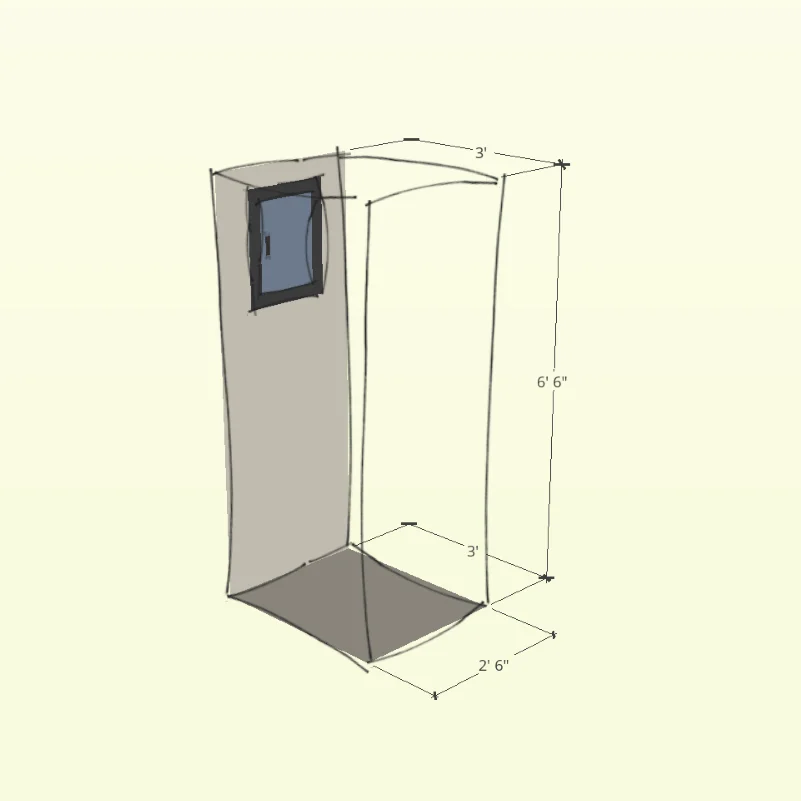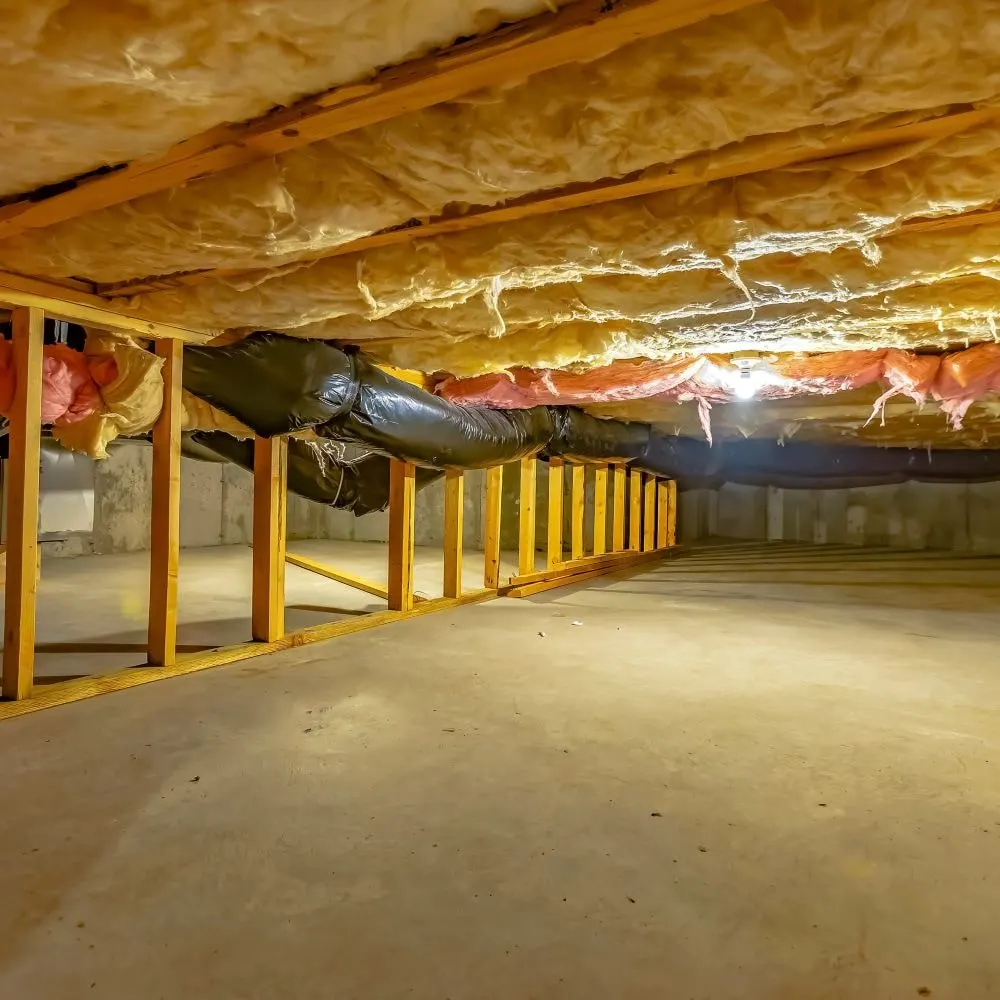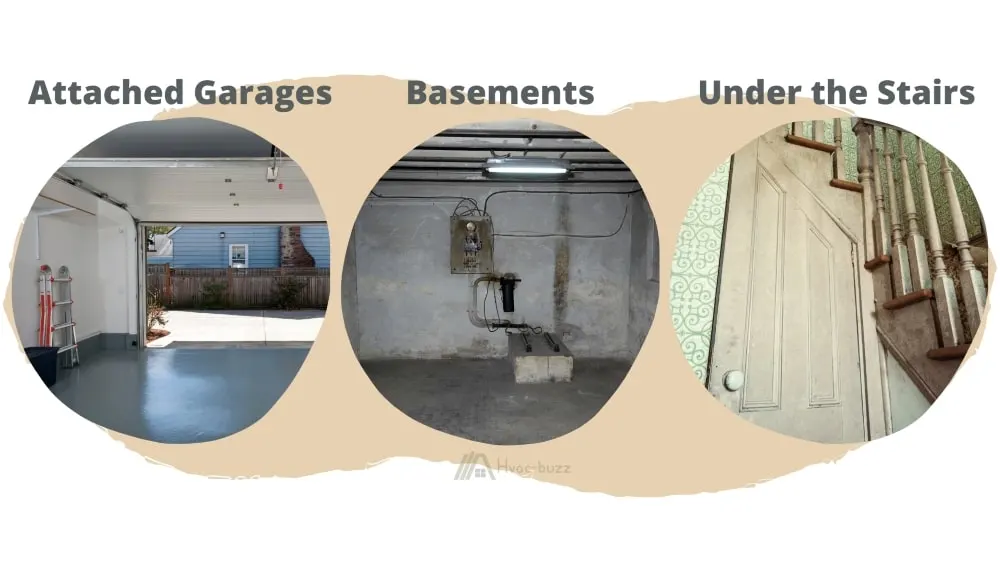Homeowners often look at crawl spaces when trying to find convenient spots for bulky appliances, such as water heaters, or for infrequently accessed electrical components, like junction boxes and subpanels because it seems a waste to take up otherwise livable areas or prime surface space for these things.
However, when deciding where to install a subpanel in your home, it is important to select a location that will protect and provide easy access to the subpanel. While putting a subpanel in a crawl space is allowed, there are specific criteria outlined by Section E3405 of the International Residential Code (IRC) that your crawl space must meet to be considered an appropriate enclosure for a subpanel.

A subpanel can be installed in a crawl space if the space has a height clearance of at least 6.5 ft and working clearance in front of the subpanel of at least 36” deep and 30” wide. The crawl space also needs to be easily accessible, provided with artificial illumination, and not used for storage.
Most Crawl Spaces Are Too Small to Meet Code Clearances
While installing a subpanel in a crawl space is allowed, most crawl spaces are too small according to code regulations to accommodate a subpanel.
To install a subpanel inside, the crawl space must have a minimum, unobstructed height clearance of 6.5 ft from the ground level. If the subpanel is installed or extends higher than 6.5 ft, then the unobstructed height of the crawl space must accommodate this.
The working space in front of the subpanel cannot be less than 36″ in depth as measured from the front of the enclosure. The enclosure door or hinged panel has to be able to open to an angle of at least 90 degrees.
Additionally, the working area directly in front of the subpanel needs to have a minimum width of 30″ and cannot be less wide than the subpanel itself.
Working space clearances described above are covered in Section 3405.2.
If you decide to install a subpanel in your crawl space, it is important to note that what is designated as the working space can no longer be utilized for storage purposes (E3405.5).

Accessibility Is Another Factor
The IRC requires accessibility to be met and maintained in accordance with the clearances described above. But you cannot just consider the space directly surrounding the subpanel. The crawl space itself needs to be easily accessible.
Imagine if you noticed a burning smell and you suspected a potential fire at the subpanel in your crawl space but before you could investigate, you had to shift furniture or boxes to access the crawl space opening. Alternatively, you had to find the smallest person in the house to squeeze through the small opening to go assess the risk.
Over and above such emergencies, you do still need easy access for maintenance and inspections.
Illumination Requirements

Code regulations (E3405.7) indicate that a crawl space must be properly illuminated by artificial light if a subpanel is installed inside.
If the crawl space is adequately illuminated by an adjacent light from another space, it is not necessary to install any new lighting.
Illumination is important in the crawl space after a subpanel has been installed because if the appliance needs any maintenance or examination, it is vital for the subpanel to be seen clearly to avoid having to fiddle with electrics by feel alone—so much could go wrong and with shocking results!
Construction string lights work perfectly in a crawl space. They will illuminate not just the work area around the subpanel, but also the way leading to it.
- Linkable Design: By carabiner, the light can be installed any place you want to hang, easy to install and remove. Turn night into day by connecting up to 22 sets together for 100,000 lumens.
- Easy Installation: Each AC cord is 50' long with five high-intensity LED light heads, each casting 1000 lumen.
- Super Bright: 5000 lumen LED string light is perfect for lighting up larger areas like outdoor sales lots, construction sites.
- Waterproof and Commercial Grade: IP65 waterproof rating means this light can meet the needs of indoor and outdoor use. As a responsible company, we uphold the highest standards for all our products by...
Last update on 2024-03-27 / Affiliate links / Images from Amazon Product Advertising API
Does Your Crawl Space Meet the Criteria?
These regulations have been put in place to ensure easy access to the subpanel in case it is in need of maintenance/servicing. In the event that the subpanel needs maintenance, it will be important that it can be seen clearly, which is why the IRC requires adequate lighting inside the crawl space.
When installing a subpanel in your home, it is important to abide by code guidelines. So, you may install a subpanel in a crawl space, but only if it meets all of the criteria noted above.
Can You Install a Subpanel Horizontally?
The National Electric Code does permit subpanels to be installed horizontally in the vertical plane (in other words, on its side). However, subpanels may only be installed horizontally if it is unable to be installed vertically due to limited space.
Additionally, the code specifies that if circuit breaker switches are operated vertically the switch must be flipped in the upwards direction when it is turned on. This is not always possible, especially with subpanels that have multiple rows of circuit breakers.
Choose a Proper Subpanel Enclosure
The enclosure needs to be a space that protects against a variety of substances/conditions that can cause damage to the delicate subpanel controls and wiring. Below is a list of items that a proper subpanel enclosure should protect against.
- Incidental contact with enclosed equipment
- Falling dirt
- Falling/splashing liquids
- Circulating dust, lint, and fibers
- Settling dust, lint, and fibers
- Seeping oil/coolant
- Spraying or splashing of oil/coolant
- Corrosive agents
- Temporary/prolonged submersion (do you live in a flood zone?)
For a fully comprehensive list and the correct enclosure type numbers, you can check out Table E3404.4 of the IRC.
For these reasons, particularly because of dust/dirt that tends to accumulate, it may be difficult to install a subpanel in a crawl space.
Putting a Subpanel in the Crawl Space: Pros and Cons
One benefit of putting a subpanel in a crawl space is that it is well-concealed. Additionally, if your crawl space meets all of the criteria listed above, it can make for a protective, secure space for the subpanel.
Even if your crawl space meets all of the requirements noted above, there are a number of reasons why this area does not make the best enclosure for a subpanel. For instance, crawl spaces located below the house may be subject to animal interference, which can cause significant damage to the subpanel.
Additionally, crawl spaces may be prone to flooding. Water can cause irreversible damage to your subpanel, so it would not be a good idea to install the appliance in a space that is at risk of becoming flooded with water easily. Encapsulating your crawl space can be a good way to eliminate this issue.
Crawl spaces may not be an ideal location for a subpanel due to the amount of dust/dirt that tends to collect in this type of space. If you decide to install a subpanel in a crawl space, you will also no longer be able to use this area for storage purposes, so you may be missing out on valuable storage space.
What About Existing Subpanels in a Crawl Space?
There are exceptions to the code guidelines for existing subpanels in a crawl space (E3405.2). In such circumstances, subpanels that are not rated higher than 200 amperes are allowed in crawl spaces even if it has a height of less than 6.5 ft. Amperes is a unit of measurement and refers to the current of an electric conductor.
Alternative Locations for Subpanels
Overall, crawl spaces may not be the best place to install a subpanel. While subpanels can technically be installed in any room of the house as long as they met the IRC guidelines, there are a few that are more convenient than others:

Attached garages are a great location to install a subpanel as long as any stored items or vehicles do not interfere with the clearance. But compared to a crawl space, garages are much more likely to provide adequate clearance. They are certainly more accessible and are almost always equipped with artificial lighting sources. A garage is also less likely to be used as a living space, so a subpanel here would be out of the way.
Basements are another great space to install a subpanel. Similarly to a garage, a basement allows for the subpanel to be out of the way. Typically, basements also provide plenty of space, which allows for easy subpanel access, and basements are easily illuminated.
Underneath the stairs is another location in your home where you can install a subpanel provided that there is enough space to comply with the IRC guidelines. This can actually be the perfect use of a small understairs space that is not big enough to be a functional storage area.
Related article: Can You Put a Subpanel in a Closet
Sources
https://forums.mikeholt.com/threads/110-26-d-is-automatic-control-required.139645/
https://www.ecmweb.com/national-electrical-code/qa/article/20897135/code-qa-enclosure-mounting-rules

